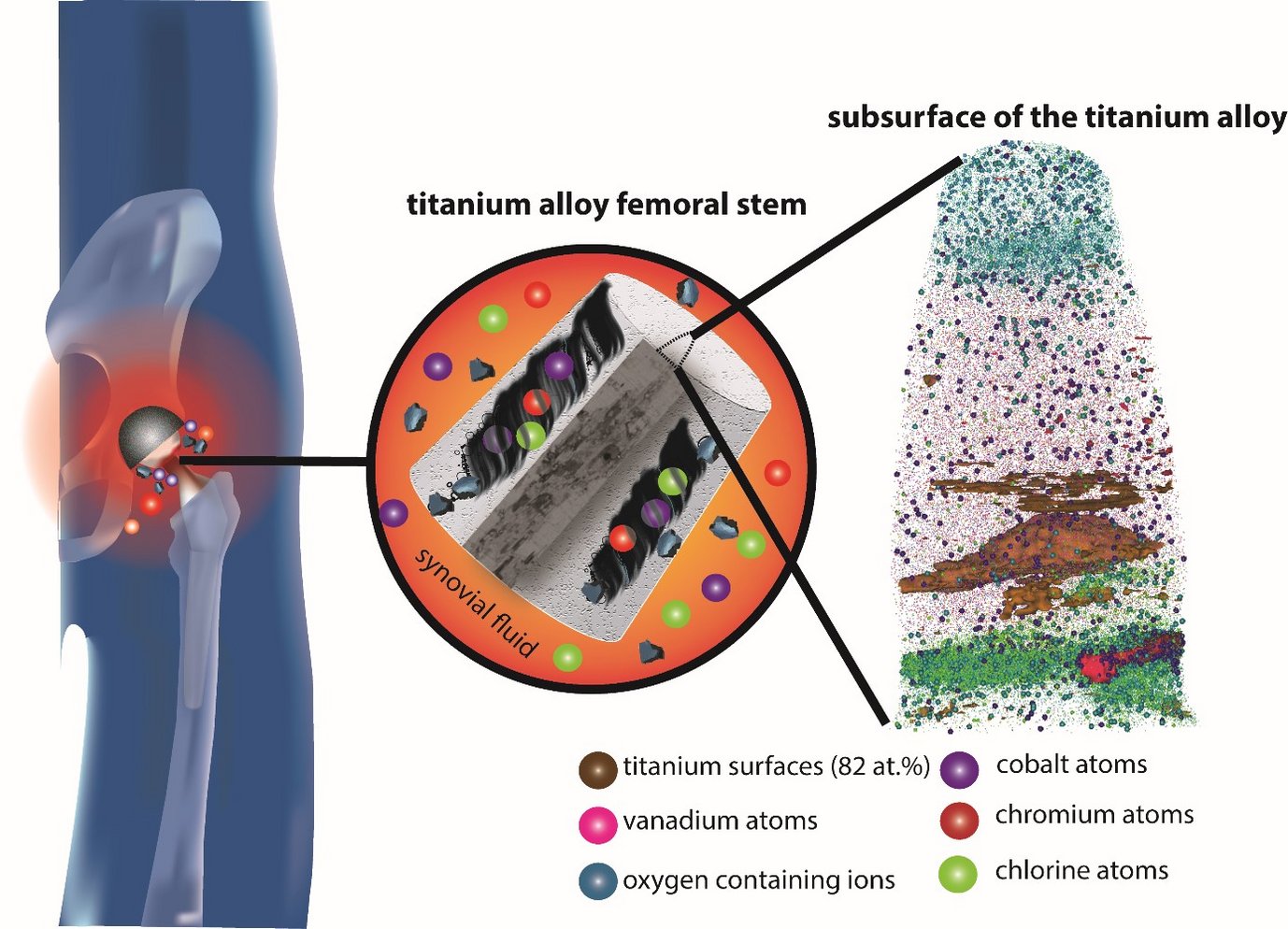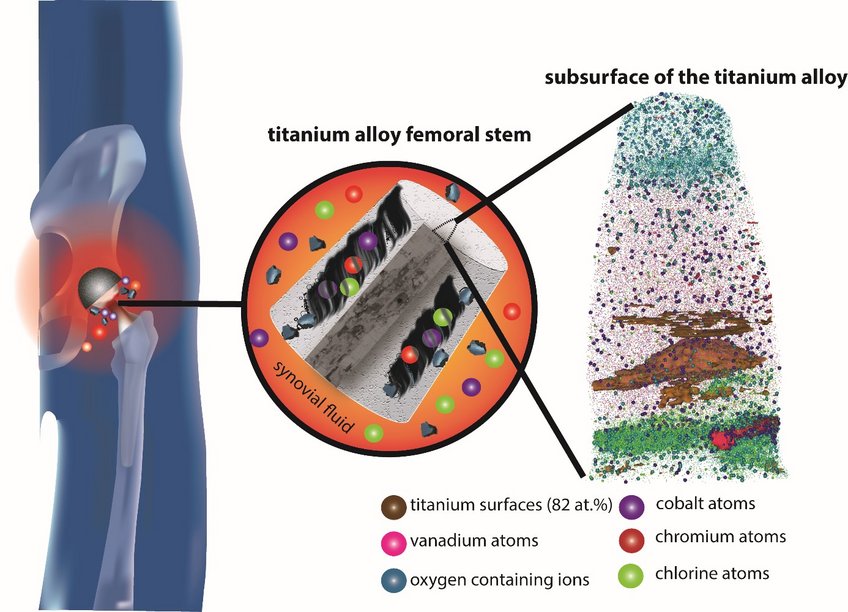Understanding Metal Ion Release from Hip Implants
Scientists of the Max-Planck-Institut für Eisenforschung publish their recent findings about material degradation of hip implants
1.8 million hip replacement surgeries were performed in developed countries in 2015. Due to lifestyle choices and a higher life expectancy, it is estimated that the number of total hip arthroplasties will increase to 2.8 million in 2050. At the end of the last millennium, artificial hip implants lasted only about 10 years. Since then physicians teamed up with material scientists to build longer lasting devices, with the goal to avoid any revision operations after implantation. One of the problems is the release of tiny small metal particles and ions into the surrounding tissue, a process accelerated by micromotion and corrosion between the modular parts of the artificial hip. To identify the underlying atomic-scale mechanisms, Dr. Michael Herbig, leader of the group “Material Science of Mechanical Contacts” at the Max-Planck-Institut für Eisenforschung (MPIE), and his team analysed cobalt and titanium alloys used in hip implants. The scientists modelled the loads and environment of the hip joint after surgery experimentally in the laboratory in collaboration with Prof. Alfons Fischer and Prof. Markus Wimmer, from the Rush University Medical Center in Chicago, USA. The results were recently published in the journal Advanced Science.
“Typical hip implants consist of a cobalt alloy femoral head fixed on a titanium alloy femoral stem. Fretting and corrosion at the junction of head and stem lead to so-called ‘tribocorrosion’ meaning that metal particles and ions are released into the body of the patient. The resulting adverse local tissue reactions could make it necessary to eventually revise the implant”, explains Dr. Shanoob Balachandran, first author of the publication together with his colleague Dr. Zita Zacharia, both postdoctoral researchers in the Mechanical Contacts Group.

Using the high-end techniques ‘atom probe tomography’ and ‘transmission electron microscopy’, it was revealed that a subsurface folding mechanism of the titanium alloy takes place, which leads to the formation of ‘shelves’ rising above surface. “The shelves poke out of the titanium alloy surfaces and scratch the opposing cobalt alloy surface, hence promoting tribocorrosion of the cobalt head. And this in turn leads to the release of metal ions”, explains Herbig. During the folding process, surface titanium and chromium oxides, in addition to chlorine from the surrounding serum are incorporated into the shelves leading to an intermixing with the matrix phases. The problem is that during the folding process a part of the oxides could be released and accumulate in the surrounding tissues instead of being incorporated into the implant. “But how can this folding process be inhibited and how do the proteins present in synovial fluid affect the alloys’ dissolution? This would be the next step of our research in order to pave the way of developing tribocorrosion resistant alloys for medical applications.”, states Zacharia.
Author: Yasmin Ahmed Salem
